July 30, 2024–Berlin, Germany
- mlchad147
- Jul 31, 2024
- 5 min read
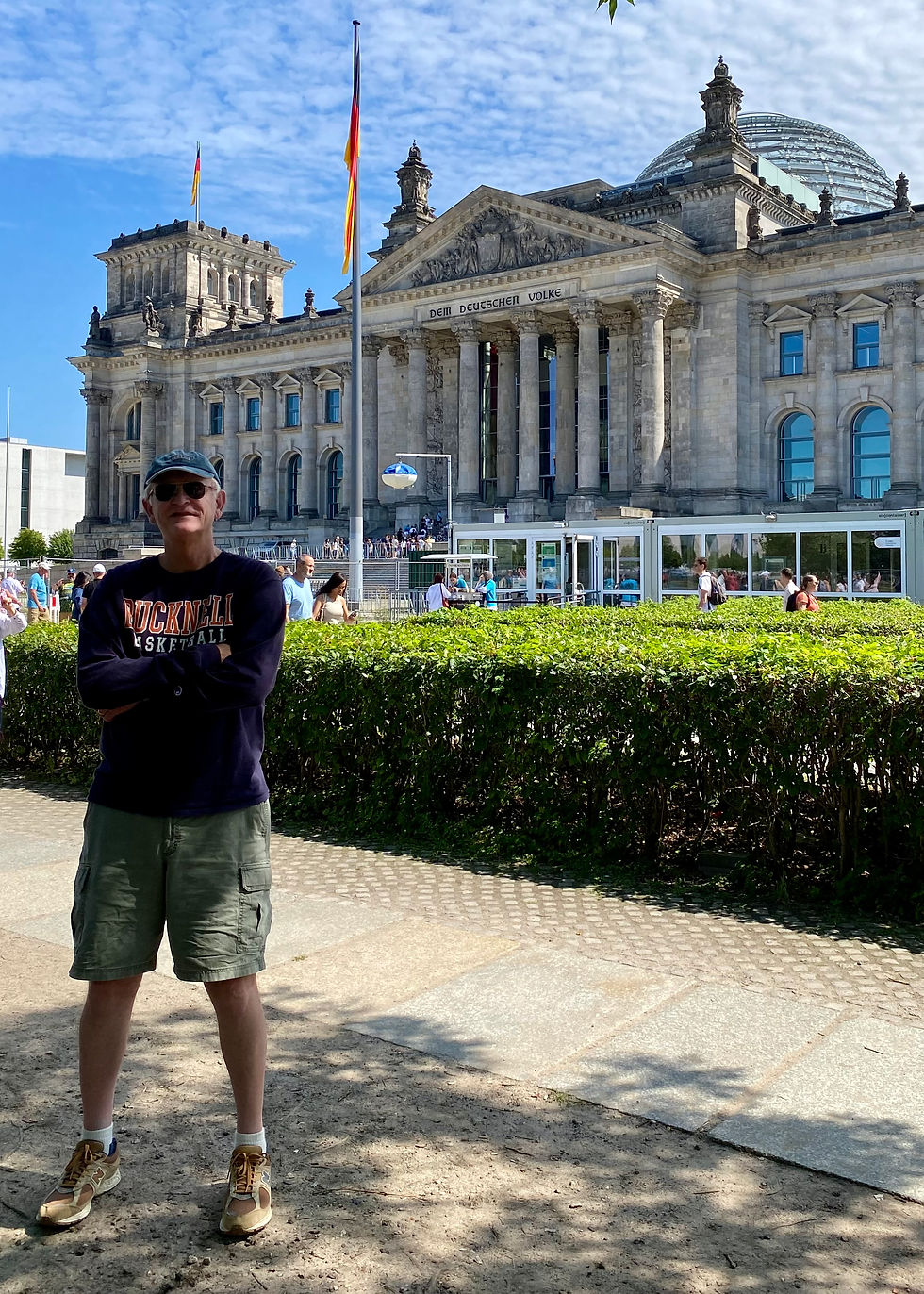
Greetings from country number 53 on our world odyssey. This morning we docked in Warnemünde, the closest Baltic port to Berlin, and importantly, a port where you can walk straight off the ship and onto a private train that goes nonstop to the German capital.
Even so, the trip takes two and a half hours, necessitating an early start and late return to give us a reasonable amount of time in Berlin. I brought a crossword puzzle book along to help pass the time, and I was glad I did.
The train was plain but fine, and we arrived in Berlin a little before 11:30 am and went directly to our tour bus to begin an excursion that brought me to all the places that were on my bucket list. I should add here that I have read several books about Berlin as it was before and during World War II, including William L. Shirer’s classics, The Rise and Fall of the Third Reich, and Berlin Diary, and I was keen to see some of the places he described as they are now in 2024.
We didn’t waste any time, going directly to the Reichstag, the German Parliament building. If you’ve seen some of the iconic photos of the Reichstag after the fighting in Berlin in April, 1945, you know the building was totally gutted, but it has been impressively restored, and except for the new dome it looks largely as it did before the war. The building’s stone is dark, and gives off a feeling that is almost foreboding. I would describe the Reichstag as powerful and muscular, rather than open and welcoming, an odd combination for the people’s house, which their Parliament building is. Just my two cents.
Next we went to the Brandenburg Gate, a triumphant monument commissioned by King Frederick William II of Prussia and completed in 1791. The chariot on the top, known as theQuadriga, has an interesting history, as like Michelangelo’s sculpture of Madonna and Child in Bruge, it was swiped by Napoleon, but returned after his defeat at Waterloo. I liked it, and rate it a must-see if you’re in Berlin.
Our next stop is less well known, but perhaps more important, as it’s a memorial to the victims of war. Formally called the Central Memorial of the Federal Republic of Germany to the Victims of War and Tyranny, it houses an enlarged version of a sculpture of a mother holding her dead son, and it is very powerful. Come and see it if you are ever here.
We made quick stops to view the Berlin Cathedral and the site where the Nazis held a book burning in 1933 before busing to lunch at the Hilton. The Cathedral was damaged by allied bombing during World War II but has been fully restored and looks good as new. As with the Reichstag, the stone is darker than that in many of the churches we’ve visited elsewhere, and maybe that’s just a thing in Germany. We didn’t go in, but I understand that the interior is fully restored too.
On May 10, 1933, the Nazis held an infamous book burning in the center of a large public square in Berlin, and today the spot has been memorialized as a reminder of what can happen when a nation’s democracy collapses, as it did in Germany that year. There’s a plaque and a window on the cobblestones where you can look below to see empty bookshelves, signifying the lost books. Again, it’s not as well known as other city landmarks, but I thought it was well done and worth a visit.
I should point out here that there’s no charming old town in Berlin as there is in the other European cities we’ve visited, as the entire city was flattened by the fighting in 1945, though individual buildings remain, such as the ones I’ve described above. Berlin is a modern city, clean and bustling, with a lot of parks and green space, and I found two facts about that greenery worth noting. As we drove around I was struck by how all the grass along the roads and in the parks was unmown and overgrown. Don’t be deceived into thinking that they’re not taking care of things. After all, this is Germany. Rather, it’s a conscious effort to make grassy areas as natural and ecologically friendly as possible. And further reinforcing the German stereotype, every tree in the city is numbered and licensed. According to our guide there are no illegal trees in Berlin.
Though we didn’t stop, we drove slowly past the Jewish Holocaust Memorial, a somber field of concrete slabs that look like coffins, before stopping at the Kaiser Wilhelm Memorial Church, which was severely damaged during the war. The interior on the ground floor has been largely restored, but the rest remains as it was in 1945, a stark reminder of the consequences of war. The magnificent mosaic tile ceiling on the ground floor is webbed with brown plaster where it has been patched, making it both great and sad at the same time.
The final act of our visit was an hour of free time in a shopping district, where other than stopping to buy a ball cap (what else, right?) we just strolled around and enjoyed the pleasant summer weather. Then it was back on the bus, back to the train station, and back on the train for the return to Warnemünde and the ship. At 12 1/2 hours, I think this was our longest one day excursion of the cruise, but it was excellent. It’s uplifting to see what Berlin has become, while still offering a clear and important reminder of what was. Come here if you ever have the opportunity.
Tomorrow is a much needed sea day, and we plan to get some rest before stopping in Latvia on Thursday. I’m looking forward to it, and I’ll take you along with me, so stay tuned.

The Reichstag, Germany’s Parliament Building. The darkness of the stone was a striking feature.

The Spree River is lovely, and hosts many river cruises.

The Brandenburg Gate, probably Berlin’s most iconic structure.
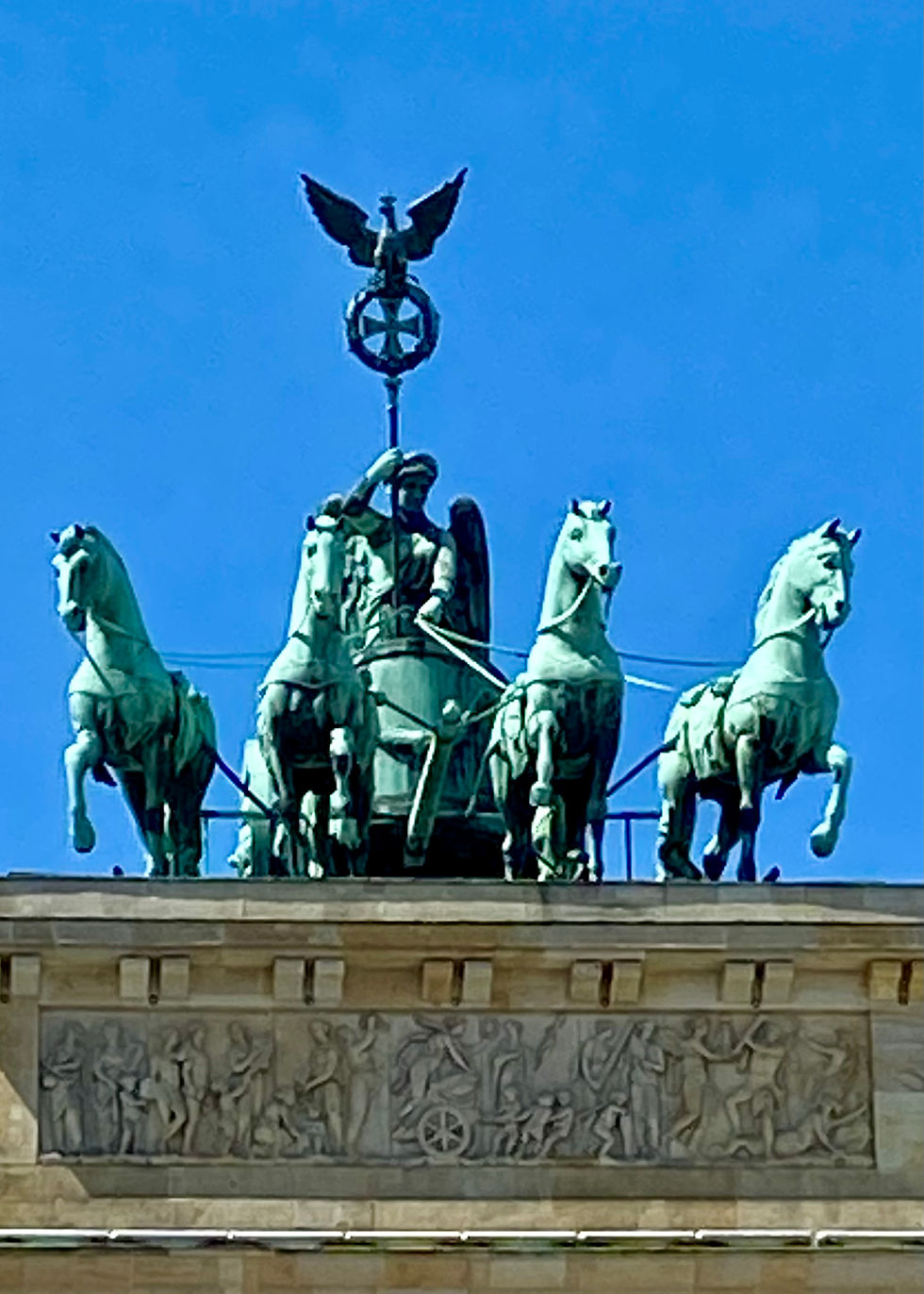
Closeup of the chariot.

Side view of the Brandenburg Gate give a different view of the chariot.

Central Memorial of the Federal Republic of Germany to the Victims of War and Tyranny. Worth visiting.

The sculpture inside is powerful.

If you visit Berlin you’ll surely find yourself on the Unter den Linden, one of the city’s most important thoroughfares.
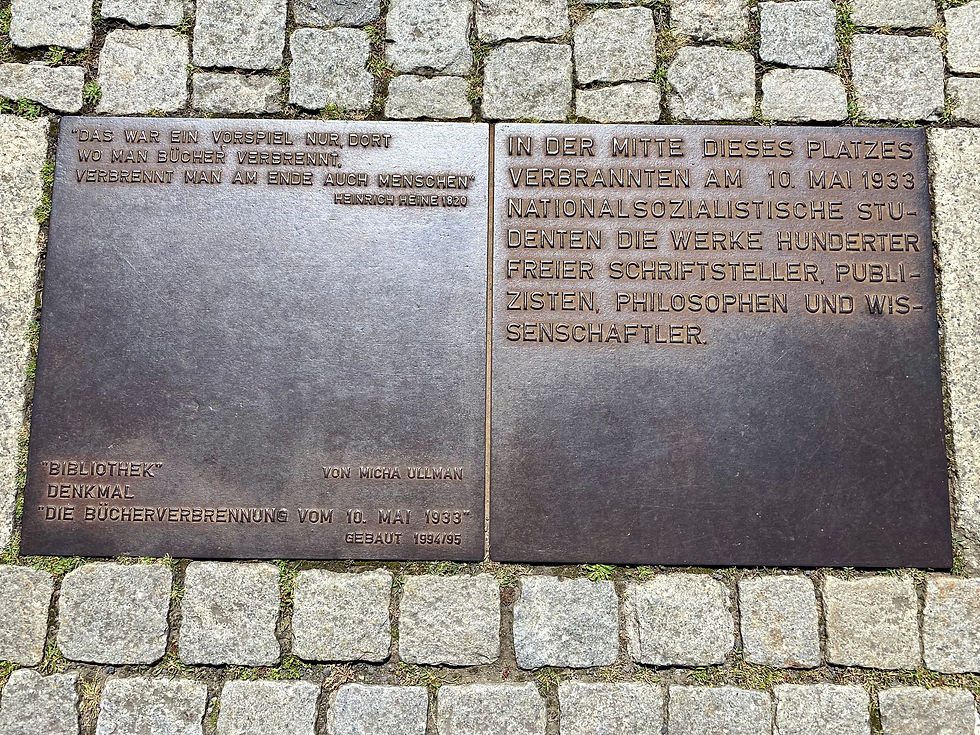
Plaque on the cobblestones in the center of the square where the Nazis infamously held a book burning in 1933. This is the kind of thing that happens when democracy is lost.

After lunch we popped into a chocolate shop across from the Hilton and discovered that they had a marvelous chocolate Brandenburg Gate. How cool is that.

And a chocolate Reichstag.

And interestingly, a chocolate bombed-out Kaiser Wilhelm Memorial Church.
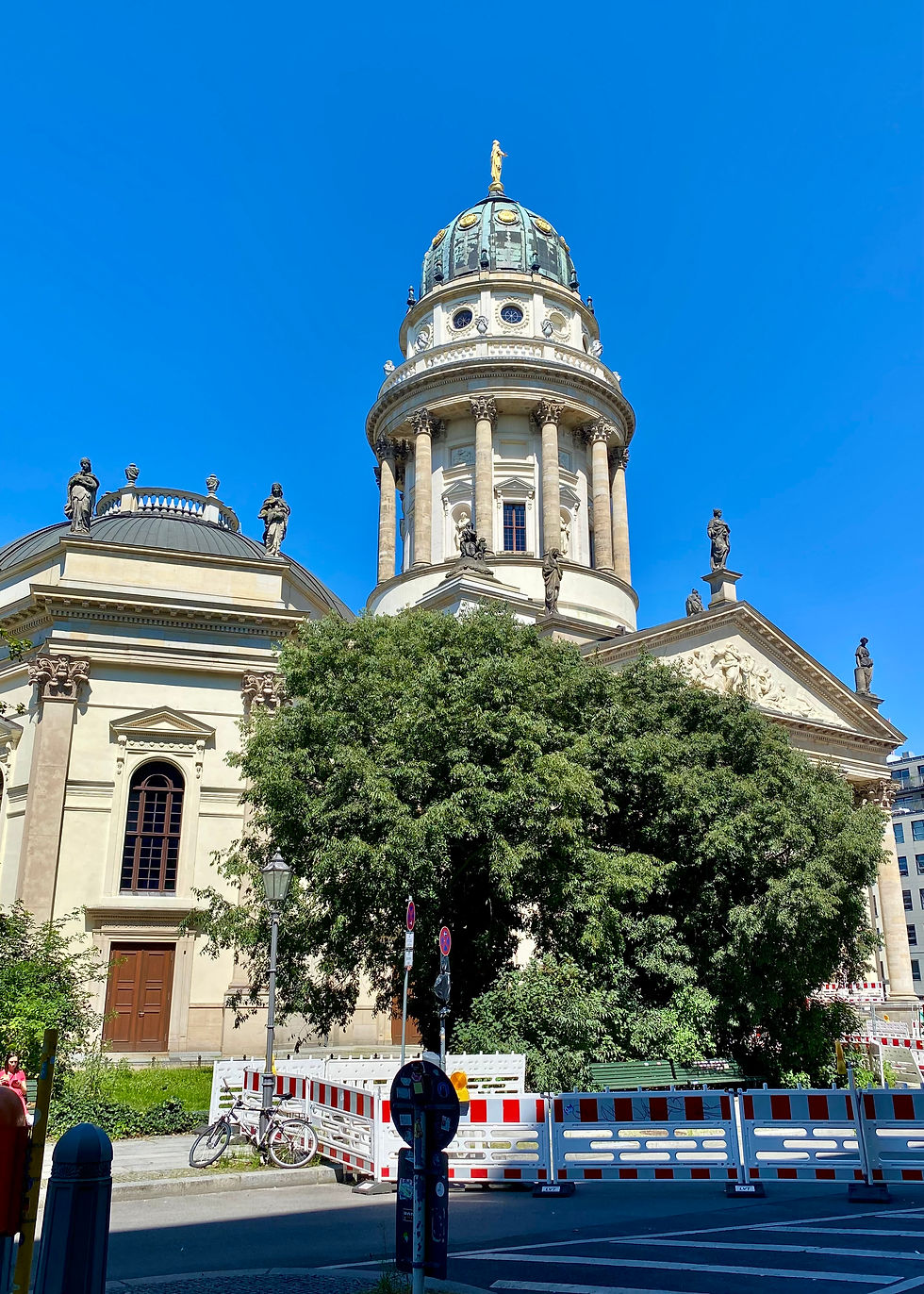
We drove past the pretty French Cathedral.

We also drove past the somber Jewish Holocaust Memorial.

A recreation of Checkpoint Charlie. The original no longer exists. It’s basically a tourist site.

The Charlottenburg Palace.
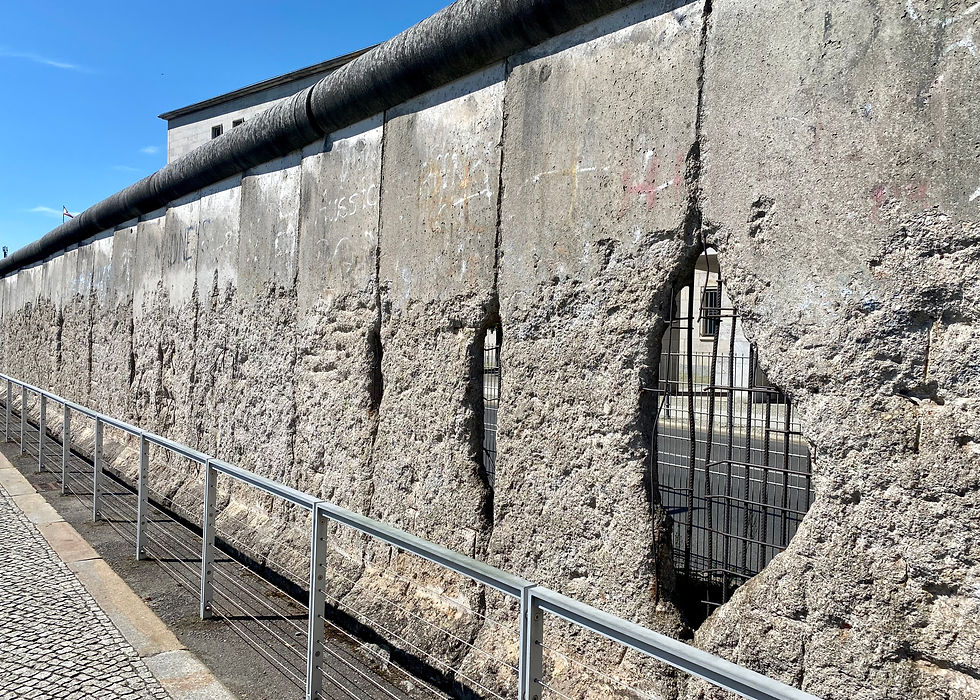
One of the few remaining sections of the Berlin Wall.

Isn’t capitalism great? This is across the street from the Berlin Wall.

This is a Trabant, a car produced in East Germany until 1991. It had a duroplast body and a two cylinder engine.

The bombed out Kaiser Wilhelm Memorial Church. You can still see pockmarks on the walls from guns and artillery.

The magnificent mosiac tile ceiling inside the restored first floor of the Kaiser Wilhelm Memorial Church.
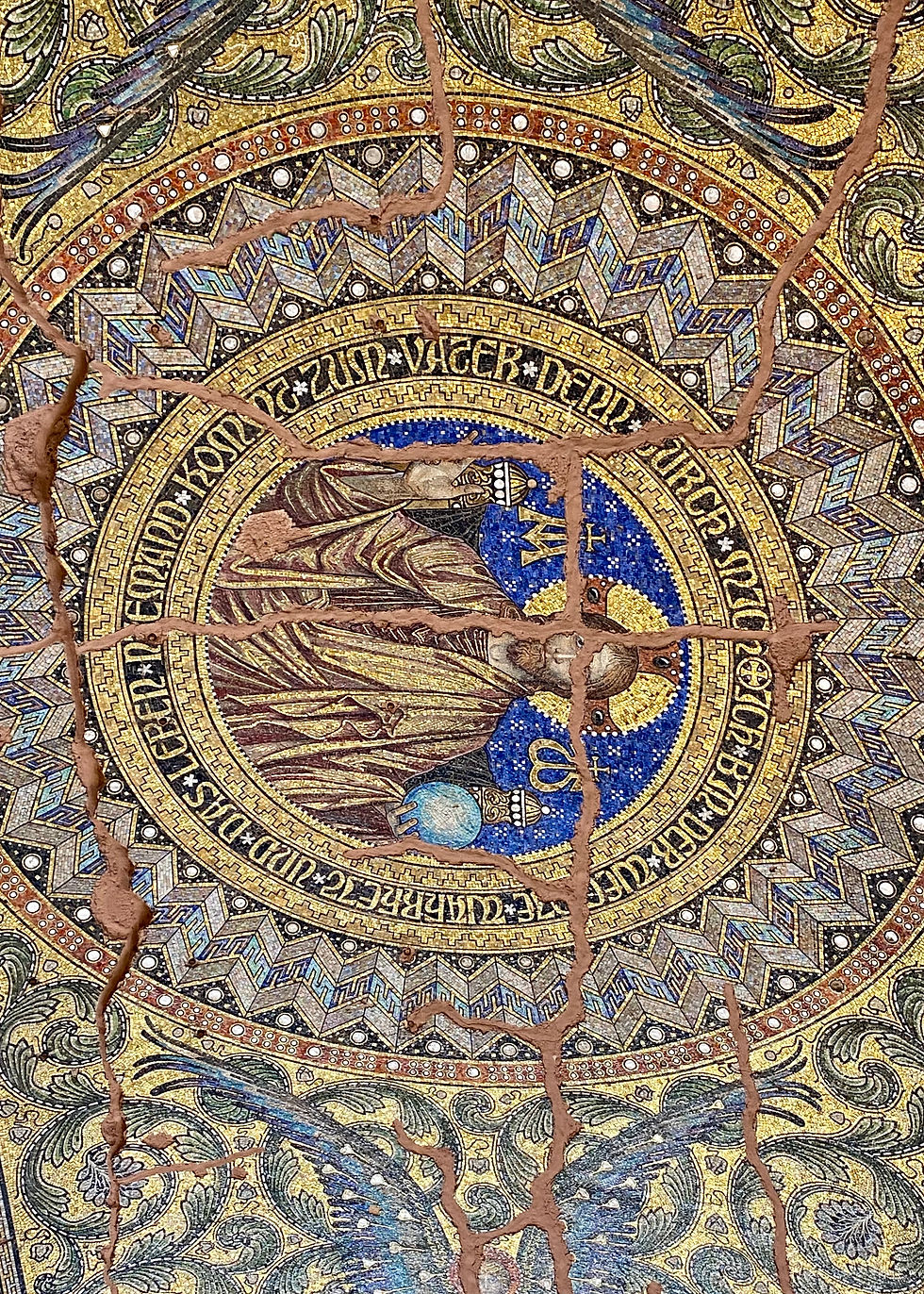
A closeup of the ceiling shows the repairs that were made after the war.
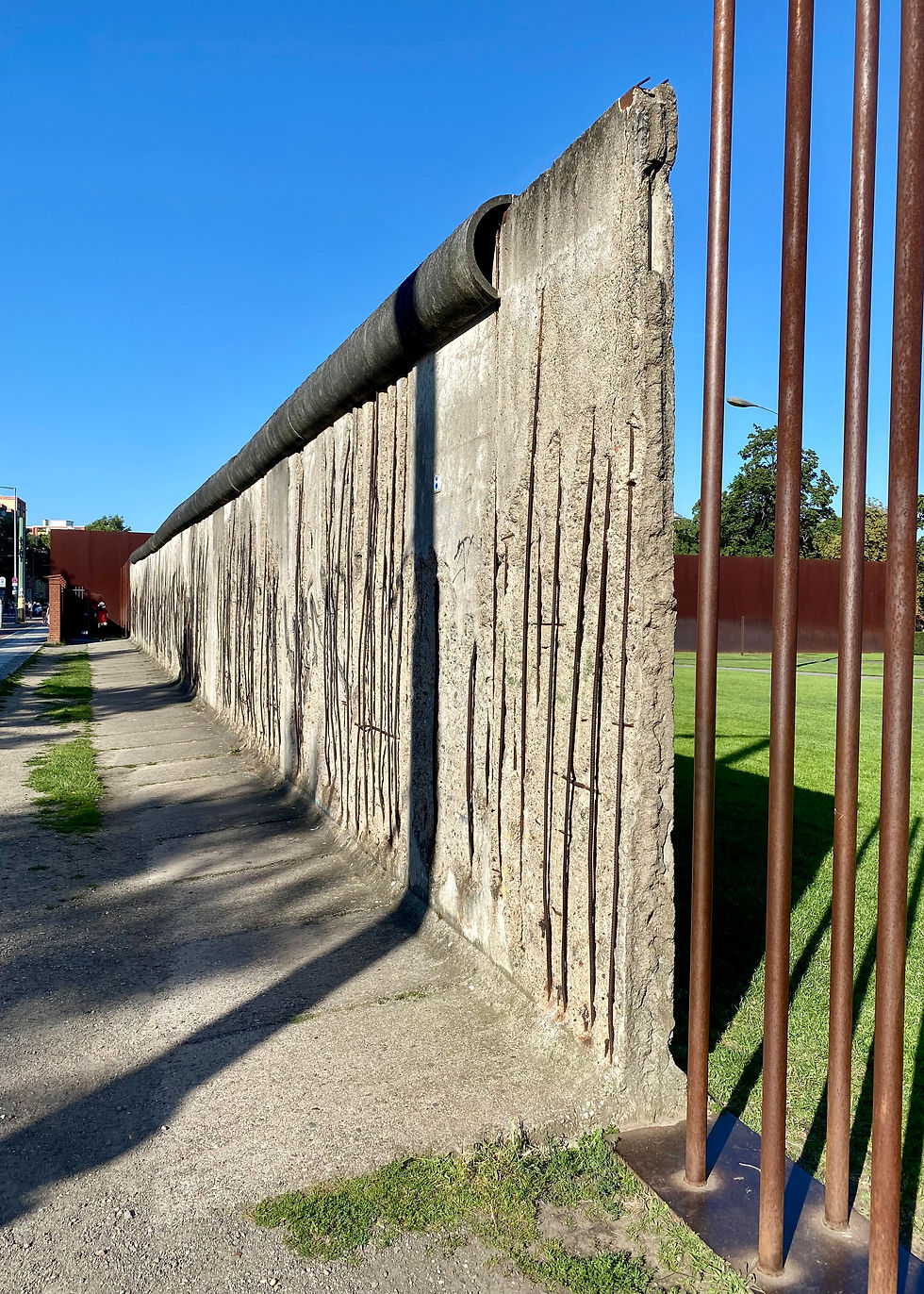
Another section of the Berlin Wall.

Young people lounging on the East German side. Quite a statement about the difference between then and now.

Waiting for the train back to Warnemünde after a great day in Berlin.

Sunset over the Baltic.


